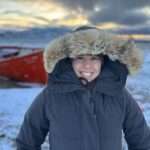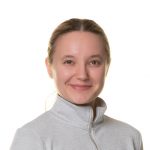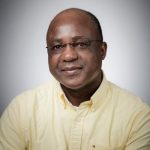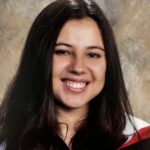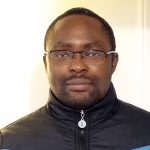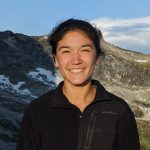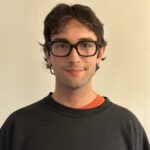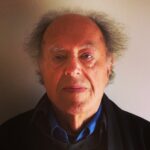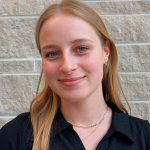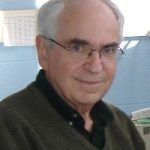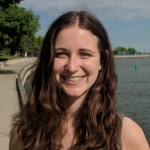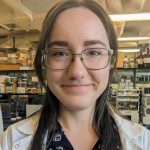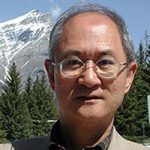CURRENT RESEARH PROJECTS
Studies of Bone
Our area of research is the investigation of the fundamental properties of bone from many aspects. Bone is the material that bones are made of. It is a natural composite material in which a strong, brittle crystalline material is woven together with a soft, weak material to produce a composite that is strong and resilient. The strong component is a form of the geological mineral apatite, a calcium phosphate, while the soft material is collagen in the form of fibers about 50 nanometers in diameter. Our work focuses on the mineral component and how it is assembled into this marvelous composite. We are working on a number of specific project to investigate this.
Ultrastructure of bone
The crystals of apatite in bone are only 5 nanometers (nm) thick and about 30 to 50 nm wide. Therefore they have to be viewed using a transmission electron microscope (TEM). Working at the Canadian Centre for Electron Microscopy (CCEM), we have been studying the details of how these crystals are assembled into bone. Here is a typical image showing how the crystals (dark)

Wrap around the fibrils of collagen (light). The scale bar is 200 nm long. We have seen these structures in bones from every kind of vertebrate (fish, reptiles, mammals) and also similar structures are found in the dentin of teeth. We are are trying to learn how these structures form by using imaging methods developed by materials engineers, including ion milling, focused ion beam (FIB) milling, and various TEM methods: bright field, dark field, HAADF, and electron diffraction. The work is being done in collaboration with Gianluigi Botton (director, CCEM) and Prof. Kathryn Grandfield (Dept of Materials Science and Engineering) along with various undergrad and graduate students (Lucy Luo, Dakota Binkley, Ivan Strakhov).
Particular projects under way include the following:
1. Ultrastructural studies of intertubular dentin in human and other teeth, relation to bone structure (Lucy Luo)
2. Electron energy loss spectroscopy (EELS) of cross sections of bone to localize collagen and other proteins (Lucy Luo, Carmen Andrei, K. Grandfield)
3. Ultrastructural studies of osteoporotic bone to test for nanometer-scale changes in bone structure (I Strakhov M.Sc project, K. Grandfield and HPS; funded by MccMaster Institute for Research in Aging [MIRA])
4. HAADF analysis of FIB sections of bone to identify larger-scale features (V. Vuong, M.Sc, K. Grandfield, H Schwarcz)
Mechanical modeling of bone
Using the model of bone ultrastructure which we have developed (McNally et al ., 2012) a group at the University of Illinois, Urbana-Champaign has been calculating the mechanical behavior of bone under stress. This work is under the direction of Prof. Iwona Jasiuk, Dept. of Mechanical Engineering, UIUC. Their computations suggested that the new model provides a closer fit to the observed properties of bone. The work is in collaboration with students Diab Abueidda and Fereshteh Sabet. Future studies will include using atomic force microscopy to measure the mechanical characteristics of single apatite platelets (“mineral lamellae”) extracted from bone.
Chemical composition of osteons and bone
With advancing age, mammalian bone is gradually replaced by new bone material (remodeling) in the form of cylindrical structures about 150 micrometers (μm) in diameter, called osteons. It is believed that the composition of the bone in these replacement structures differs from that in the replaced primary bone. We are studying this phenomenon, and other related issues, using the electron microprobe (EMP). This device allows us to determine the complete chemical composition of bone at multiple μm-sized spots and track changes in composition across volumes of bone that have grown at different times. The analyses of Ca and P also allow us to learn about variations in the nature of the apatite mineral that is present in bone. This work is being done at Western University in collaboration with Marc Beauchamp, and with McMaster personnel Dakota Binkley (M.Sc candidate), Kathryn Grandfield and HPS.
Other research interests
Stable isotope geochemistry, forensic analyses of human bone, paleodiet of ancient populations, human migration, Quaternary paleoclimate, speleothems
v:* {behavior:url(#default#VML);} o:* {behavior:url(#default#VML);} w:* {behavior:url(#default#VML);} .shape {behavior:url(#default#VML);} Normal 0 false false false false EN-US X-NONE X-NONE /* Style Definitions */ table.MsoNormalTable {mso-style-name:”Table Normal”; mso-tstyle-rowband-size:0; mso-tstyle-colband-size:0; mso-style-noshow:yes; mso-style-priority:99; mso-style-parent:””; mso-padding-alt:0in 5.4pt 0in 5.4pt; mso-para-margin-top:0in; mso-para-margin-right:0in; mso-para-margin-bottom:10.0pt; mso-para-margin-left:0in; line-height:115%; mso-pagination:widow-orphan; font-size:12.0pt; font-family:”Times New Roman”,serif;}
Studies of Bone
Our area of research is the investigation of the fundamental properties of bone from many aspects. Bone is the material that bones are made of. It is a natural composite material in which a strong, brittle crystalline material is woven together with a soft, weak material to produce a composite that is strong and resilient. The strong component is a form of the geological mineral apatite, a calcium phosphate, while the soft material is collagen in the form of fibers about 50 nanometers in diameter. Our work focuses on the mineral component and how it is assembled into this marvelous composite. We are working on a number of specific project to investigate this.
Ultrastructure of bone
 The crystals of apatite in bone are only 5 nanometers (nm) thick and about 30 to 50 nm wide. Therefore they have to be viewed using a transmission electron microscope (TEM). Working at the Canadian Centre for Electron Microscopy (CCEM), we have been studying the details of how these crystals are assembled into bone. Here is a typical image showing how the crystals (dark)
The crystals of apatite in bone are only 5 nanometers (nm) thick and about 30 to 50 nm wide. Therefore they have to be viewed using a transmission electron microscope (TEM). Working at the Canadian Centre for Electron Microscopy (CCEM), we have been studying the details of how these crystals are assembled into bone. Here is a typical image showing how the crystals (dark)
Wrap around the fibrils of collagen (light). The scale bar is 200 nm long. We have seen these structures in bones from every kind of vertebrate (fish, reptiles, mammals) and also similar structures are found in the dentin of teeth. We are are trying to learn how these structures form by using imaging methods developed by materials engineers, including ion milling, focused ion beam (FIB) milling, and various TEM methods: bright field, dark field, HAADF, and electron diffraction. The work is being done in collaboration with Gianluigi Botton (director, CCEM) and Prof. Kathryn Grandfield (Dept of Materials Science and Engineering) along with various undergrad and graduate students (Lucy Luo, Dakota Binkley, Ivan Strakhov).
Particular projects under way include the following:
1. Ultrastructural studies of intertubular dentin in human and other teeth, relation to bone structure (Lucy Luo)
2. Electron energy loss spectroscopy (EELS) of cross sections of bone to localize collagen and other proteins (Lucy Luo, Carmen Andrei, K. Grandfield)
3. Ultrastructural studies of osteoporotic bone to test for nanometer-scale changes in bone structure (I Strakhov M.Sc project, K. Grandfield and HPS; funded by MccMaster Institute for Research in Aging [MIRA])
4. HAADF analysis of FIB sections of bone to identify larger-scale features (V. Vuong, M.Sc, K. Grandfield, H Schwarcz)
Mechanical modeling of bone
Using the model of bone ultrastructure which we have developed (McNally et al ., 2012) a group at the University of Illinois, Urbana-Champaign has been calculating the mechanical behavior of bone under stress. This work is under the direction of Prof. Iwona Jasiuk, Dept. of Mechanical Engineering, UIUC. Their computations suggested that the new model provides a closer fit to the observed properties of bone. The work is in collaboration with students Diab Abueidda and Fereshteh Sabet. Future studies will include using atomic force microscopy to measure the mechanical characteristics of single apatite platelets (“mineral lamellae”) extracted from bone.
Chemical composition of osteons and bone
With advancing age, mammalian bone is gradually replaced by new bone material (remodeling) in the form of cylindrical structures about 150 micrometers (μm) in diameter, called osteons. It is believed that the composition of the bone in these replacement structures differs from that in the replaced primary bone. We are studying this phenomenon, and other related issues, using the electron microprobe (EMP). This device allows us to determine the complete chemical composition of bone at multiple μm-sized spots and track changes in composition across volumes of bone that have grown at different times. The analyses of Ca and P also allow us to learn about variations in the nature of the apatite mineral that is present in bone. This work is being done at Western University in collaboration with Marc Beauchamp, and with McMaster personnel Dakota Binkley (M.Sc candidate), Kathryn Grandfield and HPS.
Other research interests
Stable isotope geochemistry, forensic analyses of human bone, paleodiet of ancient populations, human migration, Quaternary paleoclimate, speleothems
















